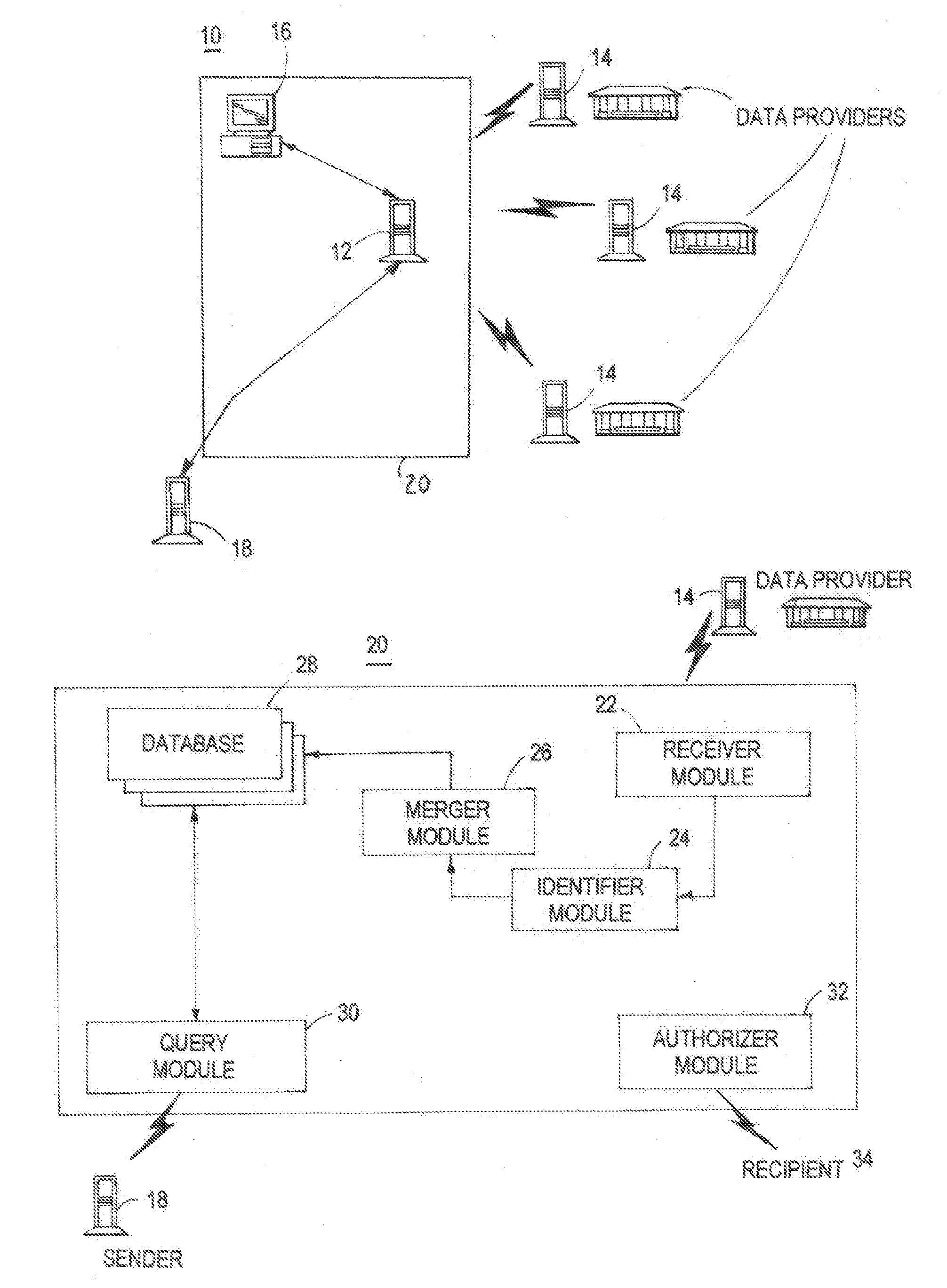System and method for identifying alternate contact information in a database related to entity, query by identifying contact information of a different type than was in query which is related to the same entity
a database and entity technology, applied in the field of updating contact information, can solve the problems of difficult re-establishment, difficult to identify, and inactive maintenance of databases, and achieve the effect of quick searching and simple searches
- Summary
- Abstract
- Description
- Claims
- Application Information
AI Technical Summary
Benefits of technology
Problems solved by technology
Method used
Image
Examples
example 1
[0115]By inputting a queried Email address of “terryw667@onebox.com”, find other known Email addresses for that Recipient. All references in this example are to the tables in FIG. 8.
[0116]1) Lookup query Email address (“terryw667@onebox.com”) in the Email_Address table, which returns an Email_ID of “26” for that Email in the Database.
[0117]2) Use the identified Email_ID (i.e., “26”) to lookup all Recipients that are associated with that Email address in the Recipients_Email table. This table shows all of the individual Recipients that are associated with that single Email address. In this example, using the identified Email_ID (“26”) to query values in the foreign key “FK_Email_ID” in Recipients_Email table (i.e., Email_ID is used as a foreign key in this table) returns a single Recipient_ID (“33”). (The corresponding Recipient_Email_ID key for this association is “9”, which designates an ID for this relationship.) dd3) Search Recipients_Email table for all records that have the fou...
example 2
[0122]By inputting a name and postal address of “Terry White” and “403 W 54th St, NY, N.Y.”, find all the known Email addresses for that Recipient. All references in this example are to the tables in FIG. 9.
[0123]1) Lookup the input postal address in the Postal_Address table (which returns a Postal_ID of “98”).
[0124]2) Use the Postal_ID (“98”) to lookup all Recipients associated with that address in the Recipient_Postal table (Recipient_IDs of “33” and “64” are returned).
[0125]3) These Recipient_IDs (“33” and “64”) are searched for in the Recipient_Name table (and correspond to “Terry” and “Hope”, both with the last name of “White”). Compare the input name (“Terry White”) to all of the names associated with these Recipients in the Recipients_Name table. In this example, there is a match to a Recipients_Name (record “213”: “Terry White”); that is, the Recipient_ID obtained above match the First Name and Last Name found in the Recipient_Name table. Only the Recipients_ID (“33”) which ...
PUM
 Login to View More
Login to View More Abstract
Description
Claims
Application Information
 Login to View More
Login to View More - R&D
- Intellectual Property
- Life Sciences
- Materials
- Tech Scout
- Unparalleled Data Quality
- Higher Quality Content
- 60% Fewer Hallucinations
Browse by: Latest US Patents, China's latest patents, Technical Efficacy Thesaurus, Application Domain, Technology Topic, Popular Technical Reports.
© 2025 PatSnap. All rights reserved.Legal|Privacy policy|Modern Slavery Act Transparency Statement|Sitemap|About US| Contact US: help@patsnap.com



